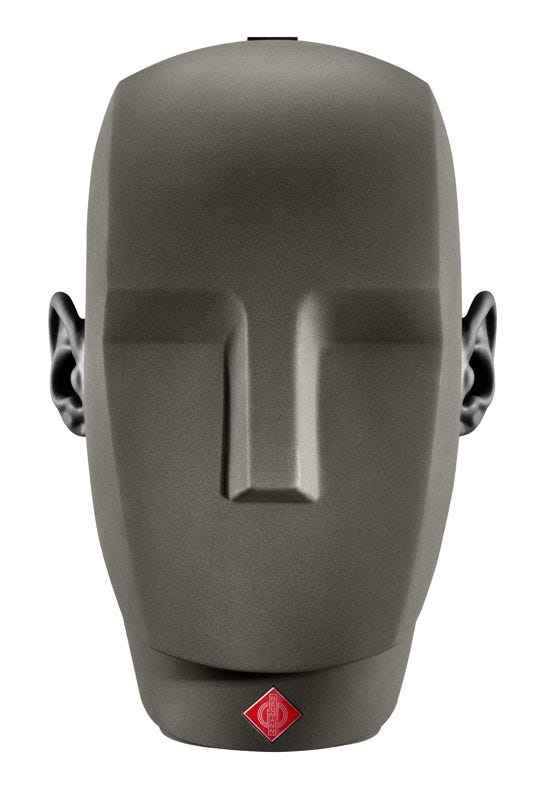Why Now is the Time to Embrace 3D-Audio in Narrative Documentary Storytelling
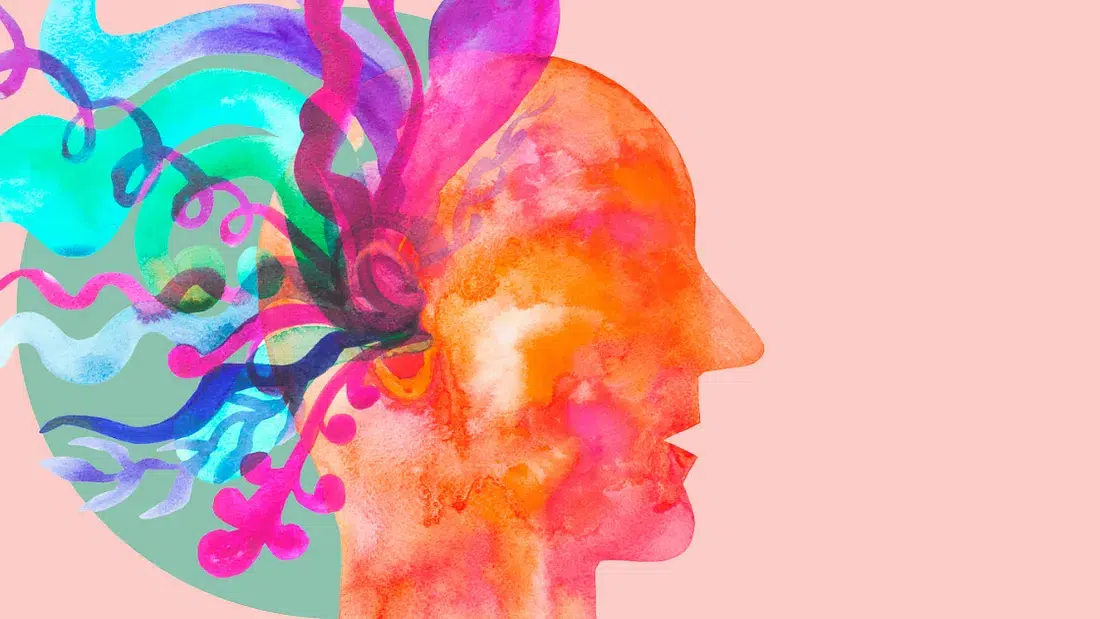
Co-written by Shawn Cole and Robyn Edgar. With contributions from Mark Angly, Dominic Girard, and Jeff Blundell
☞ Toss on some headphones and listen to this ☟
Sounds pretty cool, eh? Did it feel like the lion was sneaking behind you at times? And that it was moving above your head while the platform was rising? That’s what marketing folk call “3D Audio.” Or “Spatial Audio.” Or maybe “360 Sound.”
The clip is from the third season of Inside The Breakthrough. Our client, SciMar, was super excited when we told them our plan to roll out binaural audio. There’s an outstanding business case for using binaural technology. More on that later, but first… what the heck is binaural audio?
Science! (What is binaural audio? How does it work?)
Binaural is a bit of a catch-all phrase, but it refers to both a recording and a mixing technique that creates immersive spatial audio, giving the listener the perception of 360-degree space. The way we hear sounds isn’t just in one ear or the other but through a combination of the two. So even if a sound is coming from our right side, our left ear would still pick up some of that signal.
But because our head is between our ears and because of the shape of the outer parts of our ears, the signal to the left ear is different from the signal to the right. Our brains can tell from those two inputs where the sound is coming from in the space around us.
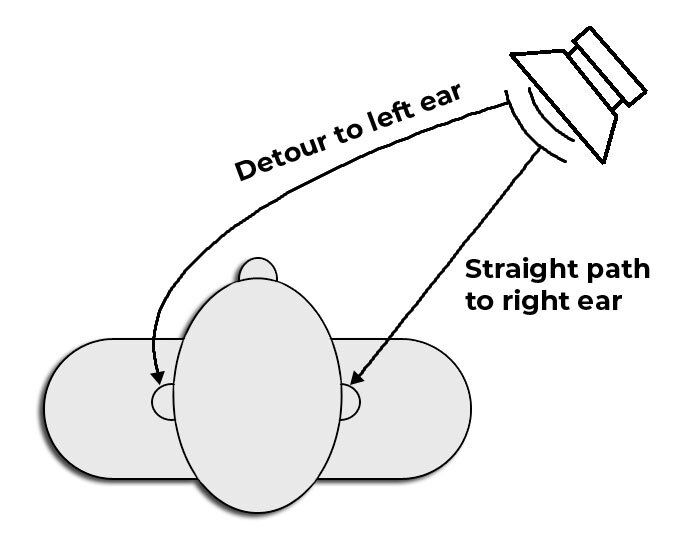
Recording with your EARS!
There are two ways to record audio that recreates this effect. The first is to use a set of earbuds that have omnidirectional microphones attached to each side. This means that the end recording will contain two channels, one for each ear. And the recording will sound like what you heard.
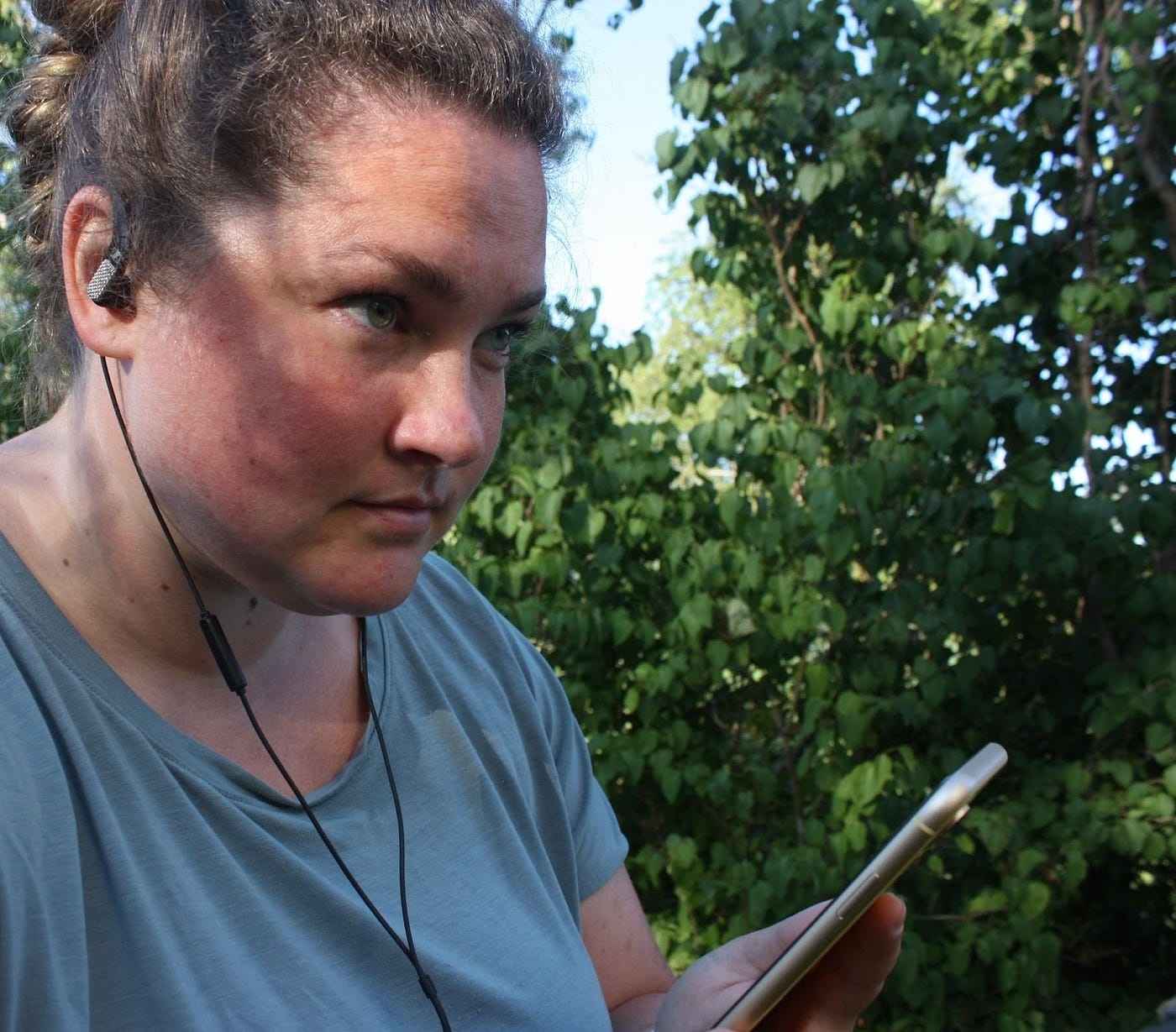

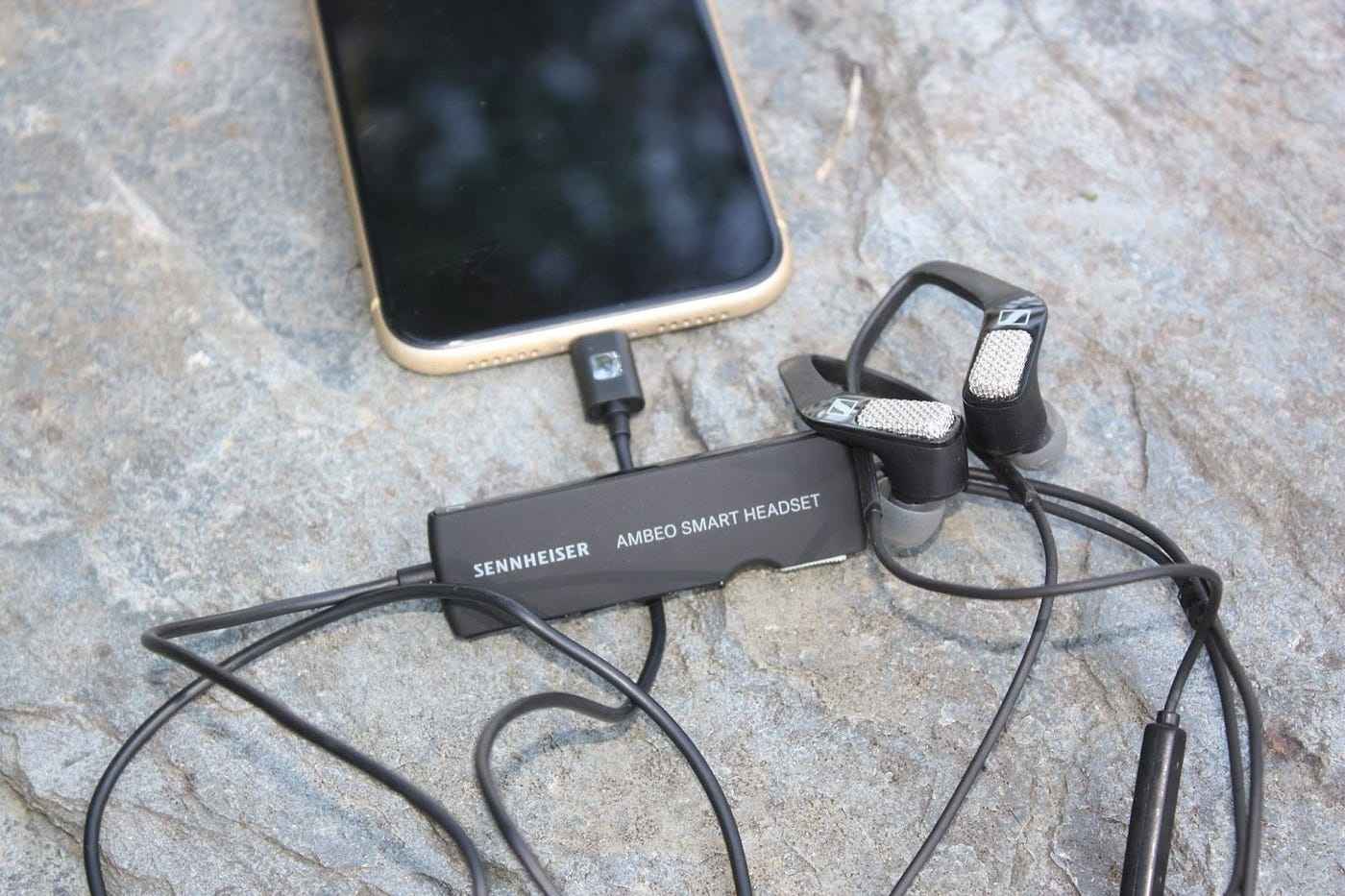
The second method for recording binaural audio is by using what’s known as a dummy head. It’s a device that looks like a model human head but has microphones embedded where the ears would be. There is even a dummy pinna (a.k.a the outer part of your ear) to attach to the outsides of the dummy’s head to help introduce the same kind of nuance that the physical shape of our ears introduces to sound waves.
Then and Now!
This may all sound like fancy, new technology, but the reality is that binaural audio dates all the way back to the late 1880s when Clément Ader invented a device he called the théâtrophone.
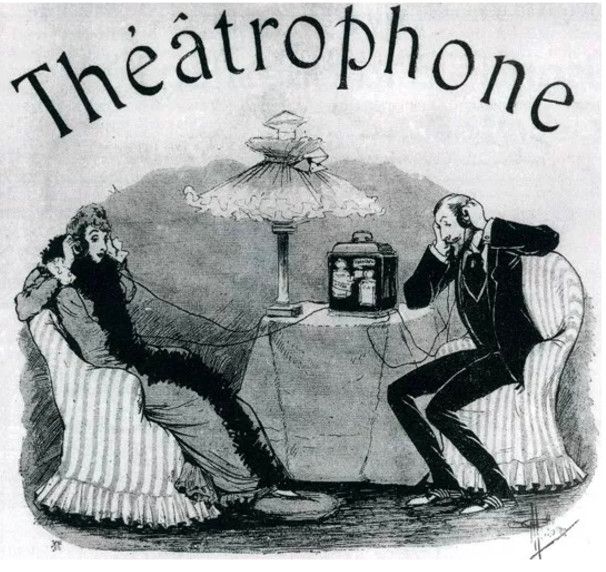
The invention made use of an array of microphones that broadcast live over the telephone system to an operator using two small speakers on either side of their ears — all to hear a theatre performance as though you were there. As with most technology when it was first invented, it was clunky and impractical for widespread adoption. Flash forward to the 1970s, and binaural audio starts to make a small comeback. But this time, the major issue that stood in the way of large-scale adoption was that to get the full experience of a binaural recording, you had to be wearing headphones. And at the time, headphones weren’t widely owned by the average person. Flash forward again, to the introduction of the Sony Walkman (and eventually the iPod) and finally the average consumer has a set of headphones lying around their house. So now, it is possible to record and distribute binaural audio to listeners.
I remember learning about Binaural Audio when I was in audio engineering school in the late ’90s. It blew my mind. I couldn’t believe that it was as simple as sticking some mics in the ears of a dummy head and giving folks headphones to listen on to make a perfect 360-degree recording of an event.
Excited about the prospect, I borrowed a dummy head from the psych department of a local university and used it for a gospel recording. The gospel choir performed in a beautiful old church. I put the dummy head in the first-row pew. It was a live recording so when you scanned the first row, it went like this: old lady, old lady, dummy head, old lady.
After setup, I went to the back of the church to listen in on what the mics were picking up. When I donned the headphones and isolated the dummy head, someone behind the dummy head in the second row sneezed.
I almost jumped out of my skin. I whipped my head around to see where the sneeze came from, and stared at the back wall of the church, astounded.
Mixing!
As I’ve mentioned before, “binaural” is a bit of a catch-all phrase — referring to both a recording and a mixing technique. And, if the input audio isn’t binaurally recorded, you can convincingly create a binaural mix with mono and stereo recordings. The good news is that as long as you have access to a digital audio workstation (DAW), you can find free binaural plugins.
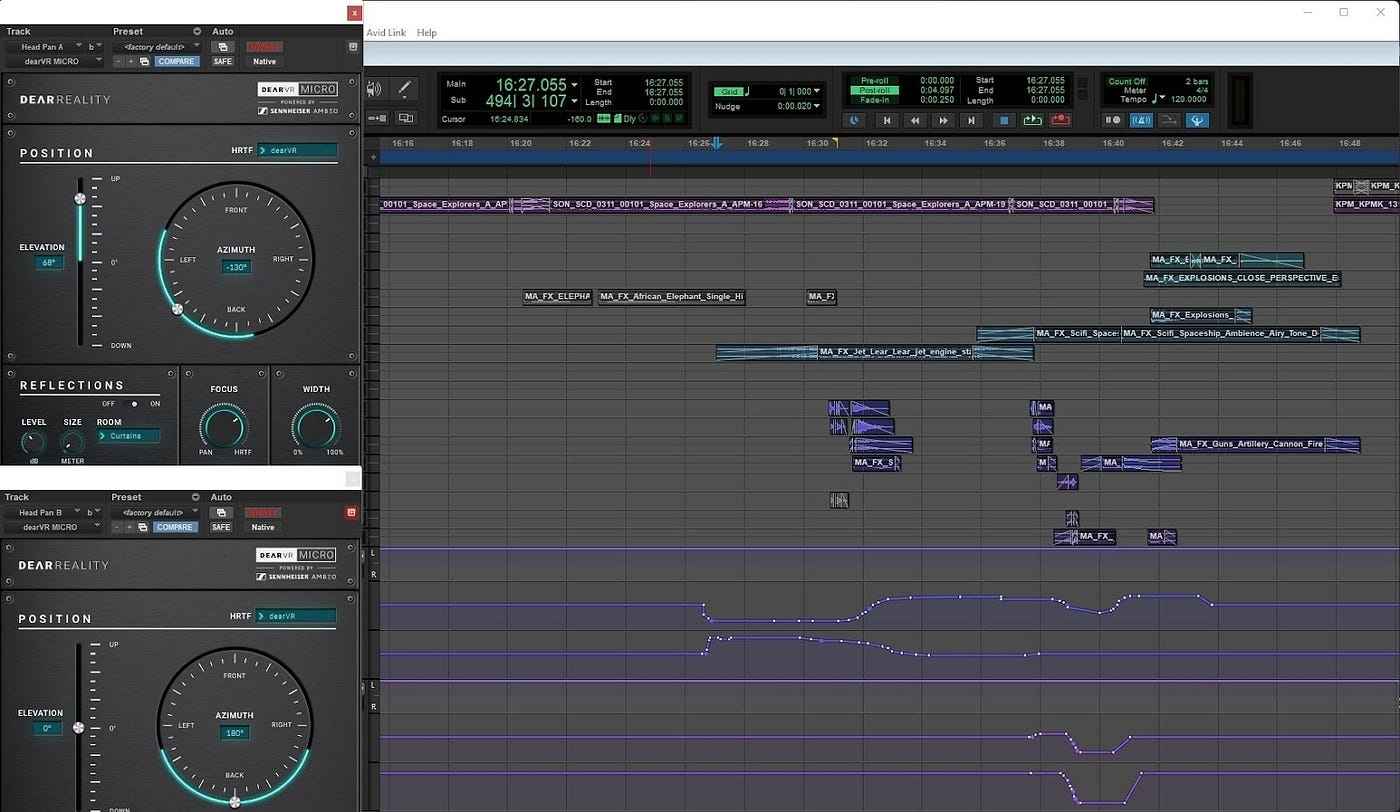
Writing for the ears!
If you’re doing the kind of show that would benefit from binaural audio, it’s important to be thinking about it from the very beginning of the production process. Having the space and opportunity in the story to create a binaural soundscape involves getting your whole team on board. The script should lean into moments describing how things sounded and the action of the scene.
Pacific Content showrunner Jeff Blundell had this to say about writing for a show that incorporates binaural audio:
“You are always trying to paint a picture for the listener. When you know you’ve got great supporting sound, you can write less. You can use fewer words and allow the SFX to do some of the heavy lifting.
If something is flying through the air, or falling off a ledge, I don’t need to describe the action, because sound can convey that motion to the audience.
Binaural audio can tell the listener how big a room is, or if someone is outside. It can give an impression of how big a crowd of people is and if they are moving or static. These are all things that we used to explain in the script.
We often talk about ‘setting the scene.’ And this lets us do that with more precision. Instead of just placing the listener in a room, I can now place them in the front of the room, or tuck them in a back corner.”
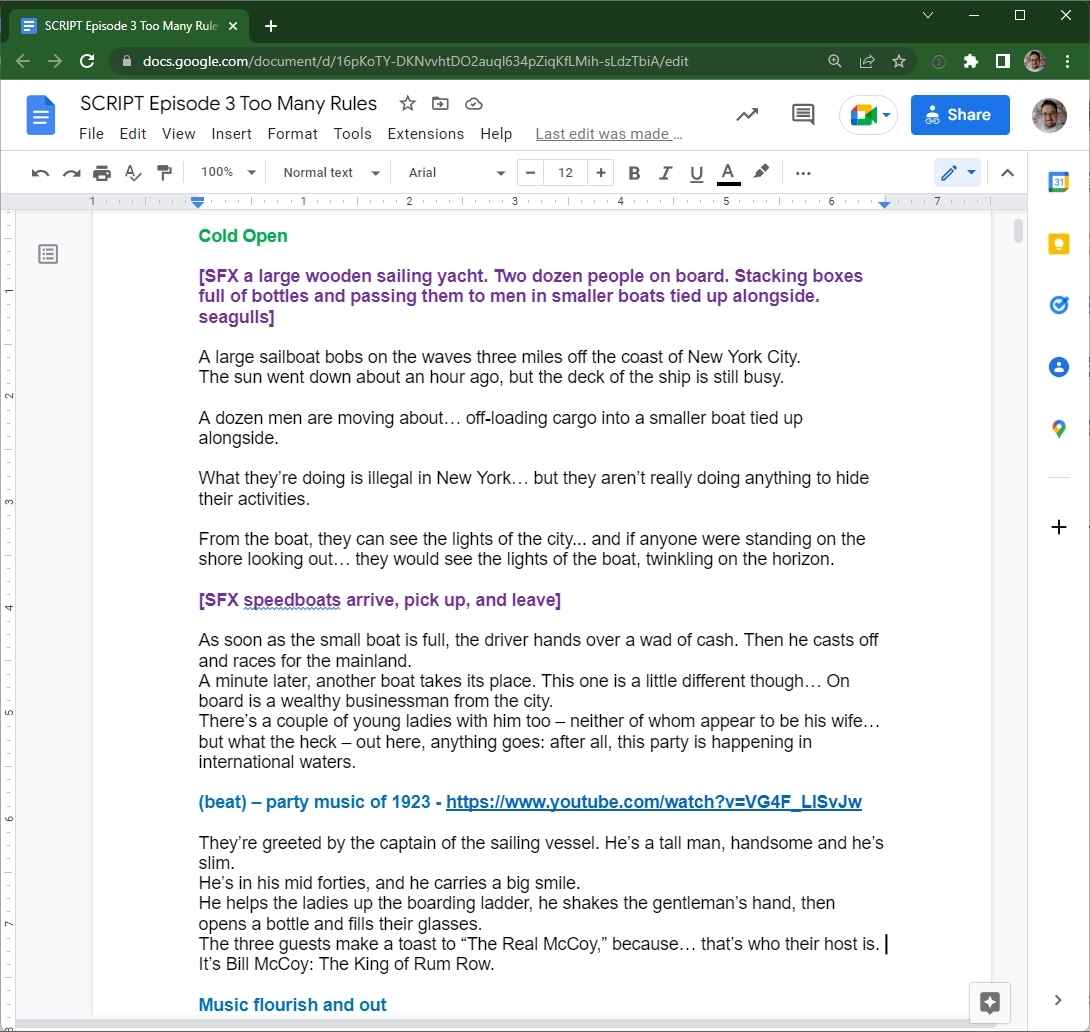
The bottom line
Podcasts that rely on great storytelling and immersive sound design are gifts to the audience. A show like Inside The Breakthrough is a perfect fit and format for flexing our binaural muscles. In this latest season, the team opted for a mix of traditional style narrative paired with binaural up front to set the scene. We have a sound-rich intro that benefits from the binaural treatment. But in the interview segment, we decided that using binaural audio would be distracting. Deciding where not to use binaural is as important as figuring out where it fits. Ask yourself “how can I elevate my storytelling?” and go from there.
Theatre of the Mind! (and Whispers)
I’m not the first nerd to realize that binaural audio and podcasting is a match made in heaven. The first big show that I heard using the technique was Marvel’s Wolverine podcast a few years ago. Binaural is a great fit for audio fiction for myriad reasons. Primarily, you are making a world from scratch, and in it, actors can interact with a binaural microphone through blocking (like in theatre).
The other podcast genre that seems to have caught on is ASMR. Not really my thing, but of course whispering into microphone-laden silicone ears can ratchet up the goosebump factor for audiences.
Narrative documentary storytelling seems like an obvious next format to my ears. We have interviews and narration where we might not use any fancy 3D treatment, but an immersive cold open that sets up the story and gets the listener hooked is a brilliant place to use binaural audio. It’s one more arrow in our quiver of sound tools and tricks that can give our shows the edge.
Beyond that, all good stories are set in a time and a place. So being able to immerse the listener in the environment while telling the story is a powerful tool that might not have the same impact in words alone. Imagine not only being able to describe the feel of a place but being able to put the listener right in the middle of it all. Virtual reality for your ears.
Extro!
So, why use binaural audio in narrative audio storytelling?
- It will enhance the listening experience.
- The tools are accessible and your existing DAW can do it.
- It’s super fun.
- Spatial Audio is the future.
- Your audience (and client) will thank you for it.
Extra stuff
More binaural audio examples:
George The Poet from the BBC has some SUPER cool stuff. This one is called Sanyu’s World
Research:
“Spatial Audio,” by Brendan Baker, Transom.
“Listening to podcasts on headphones increases ‘perceived intimacy’ with host, research finds,” by Adrienne Matei, The Guardian.
Who are podcast listeners? Clare Freeman, A Small Furry Bear Production.
Sign up for the Pacific Content Newsletter: audio strategy, analysis, and insight in your inbox.
